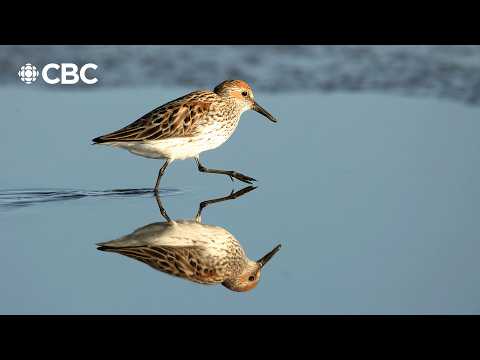Borrowing this from Wader Quest's fb page.
"This is a fantastic video, it's about the relatively recent and vital discovery of the importance of biofilm, that green slime on the surface of mudflats.
It seems that this substance is invaluable to migrating waders and, in this case, particularly to the delightful Western Sandpiper, a declining species. The video highlights their reliance on this food source for their very survival. Without it, they would be malnourished, meaning most would not be able to complete their migration and many would simply die. This would cause a decline in the population since, as a species. they would not be able to breed in sufficient numbers to maintain the population, which ultimately could lead to their extinction. Roberts Bank in British Columbia, Canada is a globally classified Important Bird Area and a key stopover for Western Sandpipers. Distressingly, its mudflats and their biofilm covering, are threatened by the proposed expansion of the Fraser Port Authority, the so-called Roberts Bank T-2 development. If allowed to go ahead this would mean additional significant habitat loss that would further endanger the species. This situation typifies a wider crisis affecting waders across the planet, highlighting the urgent need for collaboration among researchers, conservationists, and communities to protect these vital ecosystems, and the species that use them, which are becoming increasingly at risk of extinction."
https://www.youtube.com/watch?v=lMo0YiXIxjA
Western Sandpiper © Jared VanderMeer Wildlife Photography
#waders #shorebirds
#wildlife #conservation
#shorebirdconservation
#wadersconservation
#limicolas #avesplayeras
#waadvogel
#aquestforwaders
#aninspirationofwaders
#sandpiper #migration #birdlovers
#naturedocumentary #birds_matter
#mudflats #biodiversity #microbiota #biofilm


